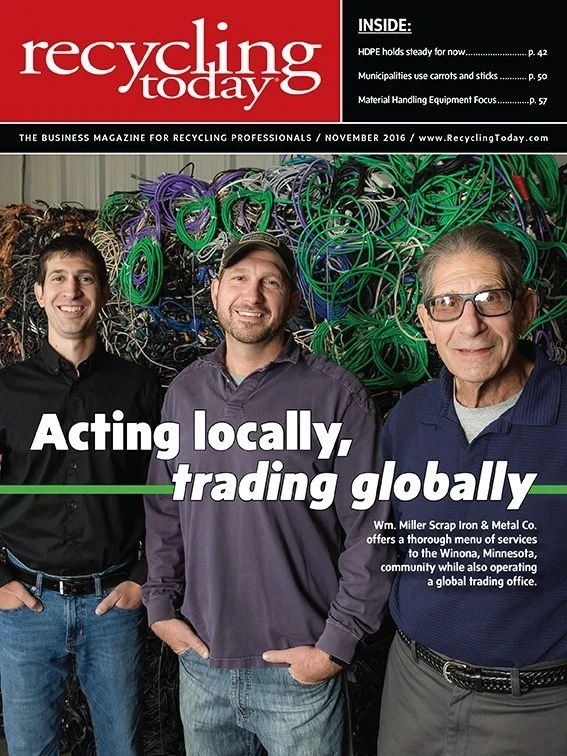
Recycling remains a popular notion among adults and young people in the United States, as well as among many corporate leaders and policymakers. That popularity has done very little to boost the price of secondary commodities in 2016, however, with recyclers across many sectors receiving fewer dollars per ton throughout the year.
In the metals sector, the elastic supply response when prices fall has kept scrap supply and demand somewhat in balance. This has helped prevent the inventory buildups sometimes seen in other recycling sectors, but metals prices continue to slide based on actions taken by primary producers.
Electronics recycling is a sector hard hit by falling prices because many investments in automated processing were made based on return-on-investment calculations performed when metals and plastics prices were higher.
In the municipal or postconsumer sector, the price slump has been having a considerable impact in the collection phase of the process. In many cities and for many haulers, material collected via municipal contracts now involves a very different set of price variables than when the contract was negotiated.
After year-end volume figures are gathered for 2016, the industry likely will see the significant effects tied to the scaling back of incentives for individual and municipal collectors of scrap materials. Lower volumes collected can be expected for most materials.
“After year-end volume figures are gathered for 2016, the industry likely will see the significant impacts tied to the scaling back of incentives for individual and municipal collectors of scrap materials.”
The recycling landscape experienced some major changes in 2016, and while some of these can be considered “bad news” stories, thankfully that is far from the whole picture.
Investments continue to be made in material recovery facilities (MRFs) in communities throughout North America. In the metals recycling sector, in the vast majority of cases when a company has been selling assets, it has found a matching buyer.
As has been stated before in this publication, the “great commodities boom” of the first dozen or so years of this century—spurred largely by the industrialization and urbanization of China—seems to have wound down.
The top-line numbers on many company ledgers have declined, causing a difficult circumstance for any group of executives or managers. Despite this new reality, family and publicly traded companies alike are demonstrating strong commitments to recycling’s future.

Explore the November 2016 Issue
Check out more from this issue and find your next story to read.
Latest from Recycling Today
- Orion ramping up Rocky Mountain Steel rail line
- Proposed bill would provide ‘regulatory clarity’ for chemical recycling
- Alberta Ag-Plastic pilot program continues, expands with renewed funding
- ReMA urges open intra-North American scrap trade
- Axium awarded by regional organization
- Update: China to introduce steel export quotas
- Thyssenkrupp idles capacity in Europe
- Phoenix Technologies closes Ohio rPET facility





